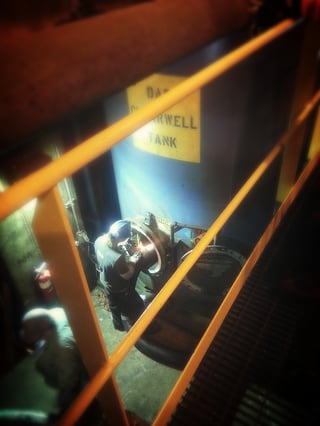If you work on, in, around, or near confined spaces you're familiar with the roles involved - attendant, entrant, supervisor - and you know their functions and responsibilities. Generally speaking, in a permit-required confined space operation the supervisor supervises, the entrant makes entry, and the confined space attendant does nothing but attend, right?
- and you know their functions and responsibilities. Generally speaking, in a permit-required confined space operation the supervisor supervises, the entrant makes entry, and the confined space attendant does nothing but attend, right?
What most programs will state is that the attendant is responsible for monitoring the safety of the workers working inside the confined space. The attendant is responsible for log-keeping, air monitoring, summoning help, and maybe even attempting non-entry rescue. Some of these subjects vary in their teachings and to what extent you're permitted or required to do them. One thing they always agree on, THE ATTENDANT NEVER ENTERS THE SPACE!
This information is true, to some degree. OSHA requires an attendant and the attendant is responsible for everyone inside, but, when you investigate the confined space standard an attendant is allowed to enter a space.
In the standard, 1910.146, it states:
"Attendant" means an individual stationed outside one or more permit spaces who monitors the authorized entrants and who performs all attendant's duties assigned in the employer's permit space program.
1910.146(i)(4) gives a seldom-mentioned exception to the rule of "an attendant never enters:"
NOTE: When the employer's permit entry program allows attendant entry for rescue, attendants may enter a permit space to attempt a rescue if they have been trained and equipped for rescue operations as required by paragraph (k)(1) of this section and if they have been relieved as required by paragraph (i)(4) of this section.
While this is not drastically different from what you may know, it is important to know that an attendant is, under specific conditions, permitted to make entry. I have yet to see this procedure as part of a confined space program in the real world but it doesn't mean it is impractical or without merit. If your attendant is trained and equipped for rescue, and they've been relieved by a competently trained attendant, they could enter to initiate patient treatment or extraction.
A problem in relying upon this method of rescue would be locating a second attendant. It is more expedient to have an attendant and rescuer(s) present at the confined space job site, but if this is your cost-effective consideration you may have shortened the length of time it takes to rescue the entrant.
If you are looking for more information on confined spaces, confined space training, or if you are looking to hire a confined space attendant or a confined space rescue team, contact Safety Training Services today!

